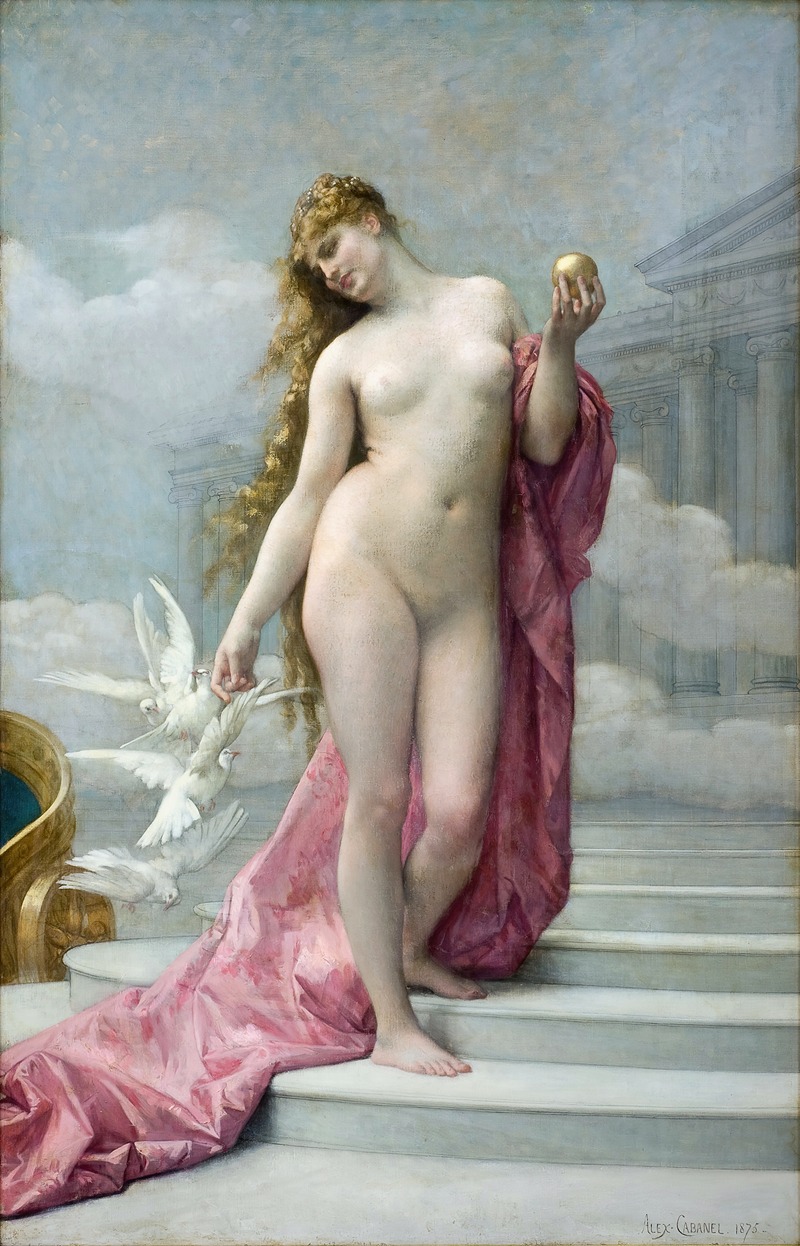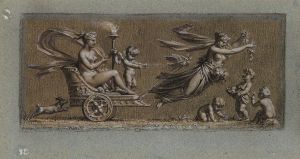
Vénus
A hand-painted replica of Alexandre Cabanel’s masterpiece Vénus, meticulously crafted by professional artists to capture the true essence of the original. Each piece is created with museum-quality canvas and rare mineral pigments, carefully painted by experienced artists with delicate brushstrokes and rich, layered colors to perfectly recreate the texture of the original artwork. Unlike machine-printed reproductions, this hand-painted version brings the painting to life, infused with the artist’s emotions and skill in every stroke. Whether for personal collection or home decoration, it instantly elevates the artistic atmosphere of any space.
Alexandre Cabanel's "The Birth of Venus" is a renowned painting that exemplifies the academic art style of the 19th century. Completed in 1863, this work is one of Cabanel's most celebrated pieces and is often associated with the French academic tradition that emphasized classical themes and meticulous technique.
The painting depicts the mythological birth of Venus, the Roman goddess of love and beauty, emerging from the sea. In this artwork, Venus is portrayed as a nude figure reclining on the waves, surrounded by cherubs and sea foam. Her pose is both sensual and serene, embodying the idealized beauty that was highly valued in academic art. The composition is carefully balanced, with Venus positioned centrally, drawing the viewer's eye immediately to her figure.
Cabanel's "The Birth of Venus" was first exhibited at the Paris Salon of 1863, where it was met with great acclaim. The Salon was the official art exhibition of the Académie des Beaux-Arts in Paris and was a significant event for artists of the time. Cabanel's work was praised for its technical skill and adherence to classical ideals, which were hallmarks of the academic style. The painting was purchased by Napoleon III, the Emperor of France, further cementing its status and popularity.
The work is characterized by its smooth brushwork and the soft, luminous quality of the skin tones, which are typical of Cabanel's style. The artist's attention to detail is evident in the delicate rendering of the waves and the ethereal quality of the cherubs. The use of light and shadow enhances the three-dimensionality of Venus's form, making her appear almost lifelike.
"The Birth of Venus" reflects the 19th-century fascination with classical mythology and the idealization of the human form. It also illustrates the tension between traditional academic art and the emerging modernist movements that were beginning to challenge established norms. While Cabanel's work was celebrated by the academic establishment, it was also contemporaneous with the rise of Impressionism and other avant-garde movements that sought to break away from classical conventions.
Today, "The Birth of Venus" is housed in the Musée d'Orsay in Paris, where it continues to be admired by visitors from around the world. The painting remains a quintessential example of 19th-century academic art and is often studied for its technical mastery and its representation of classical themes. Cabanel's work has influenced generations of artists and continues to be a subject of scholarly interest and public fascination.
In summary, Alexandre Cabanel's "The Birth of Venus" is a masterpiece of academic art that captures the beauty and elegance of classical mythology. Its success at the Paris Salon and its acquisition by Napoleon III highlight its significance in the art world of the 19th century. The painting's enduring appeal lies in its exquisite execution and its embodiment of the artistic ideals of its time.


















